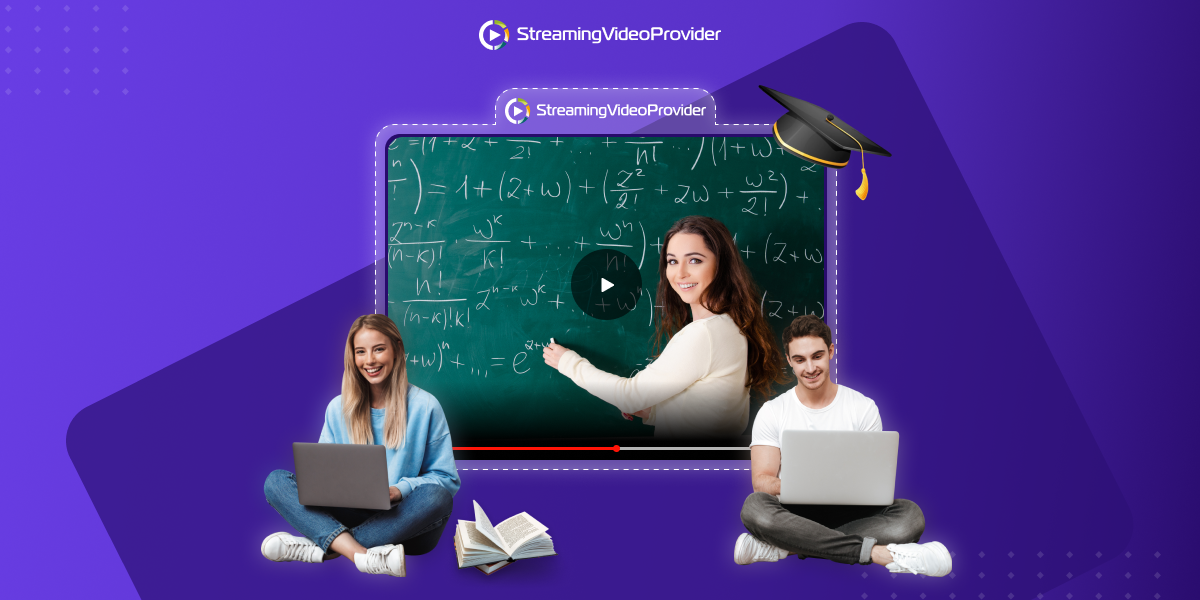Video Streaming Infrastructure for Online Education
As the demand for online education continues to surge, the need for robust and reliable video streaming infrastructure becomes paramount. An effective video streaming setup ensures seamless delivery of live classes and on-demand content, enhancing the learning experience for students worldwide. In this comprehensive guide, we will explore the critical components of video streaming infrastructure, technological requirements, best practices, and future trends in the realm of online education.
Importance of Video Streaming in Online Education
1. Enhancing Engagement
Video streaming significantly enhances student engagement by providing a dynamic and interactive learning environment. Live streaming allows for real-time interaction between instructors and students, fostering a sense of community and immediacy.
2. Ensuring Accessibility
With video on demand (VoD) , educational content becomes accessible anytime and anywhere, catering to diverse student schedules and geographical locations. This flexibility is especially beneficial for learners who need to review material at their own pace.
3. Facilitating High-Quality Instruction
High-definition video and clear audio quality are crucial for effective instruction. A well-structured video streaming infrastructure ensures that educational content is delivered in a professional and comprehensible manner, maintaining student interest and comprehension.

Key Components of Video Streaming Infrastructure
1. Streaming Hardware
Investing in high-quality streaming hardware is the first step in building a robust infrastructure. Essential hardware components include:
- HD Cameras : Ensure high-quality video capture.
- Microphones : Provide clear and crisp audio.
- Capture Cards : Convert video signals for streaming purposes.
- Lighting Equipment : Enhance video quality by providing adequate lighting.
2. Streaming Software
Streaming software is pivotal for managing and broadcasting video content. Popular streaming software includes:
- OBS Studio : Open-source software with extensive features for live streaming.
- vMix : Professional live video production software with advanced functionalities.
- Wirecast : Offers a range of tools for live streaming and production.
3. Content Delivery Network (CDN)
A Content Delivery Network (CDN) is essential for distributing video content efficiently. CDNs like Akamai, Cloudflare, and Amazon CloudFront reduce latency by caching content in multiple locations globally, ensuring fast and reliable video delivery.
4. Learning Management Systems (LMS)
Integrating video streaming with a Learning Management System (LMS) such as Moodle, Canvas, or Blackboard centralizes the management of educational content. LMS platforms support live streaming and VoD, providing a cohesive learning experience for students.
5. Cloud Storage
Cloud storage solutions like Google Drive, Dropbox, and AWS S3 offer scalable and secure storage for video content. Cloud storage facilitates easy access, sharing, and management of large video files.
Best Practices for Implementing Video Streaming Infrastructure
1. Ensure Reliable Internet Connectivity
A stable and high-speed internet connection is crucial for uninterrupted video streaming. It is recommended to use a wired Ethernet connection for consistent bandwidth and reduced latency.
2. Optimize Video Quality
Optimizing video settings such as resolution, bitrate, and frame rate ensures the best possible streaming quality. Common settings include:
- Resolution : 1080p for high-definition streaming.
- Bitrate : 4,500 to 6,000 kbps for 1080p video.
- Frame Rate : 30 frames per second (fps) for smooth video playback.
3. Implement Redundancy
Implementing redundancy in hardware and software components minimizes the risk of technical failures. Backup cameras, microphones, and streaming software ensure continuous operation in case of primary system malfunctions.
4. Monitor Performance
Regularly monitoring performance metrics such as latency, buffering, and drop rates helps identify and resolve streaming issues promptly. Tools like Streamlabs and Restream provide real-time analytics and performance insights.
5. Provide Technical Support
Having a dedicated technical support team available during live sessions ensures that any technical issues are resolved swiftly, minimizing disruptions to the learning process.
Challenges and Solutions in Video Streaming for Education
1. Bandwidth Limitations

Bandwidth limitations can lead to buffering and poor video quality. To address this, institutions can:
- Optimize Video Compression : Use efficient codecs like H.264 to reduce file sizes without compromising quality.
- Prioritize Network Traffic : Allocate sufficient bandwidth for educational streaming services.
2. Security Concerns
Security is a major concern in online education. Protecting video content from unauthorized access and ensuring data privacy is essential. Solutions include:
- Encryption : Use SSL/TLS encryption for data transmission.
- Access Control : Implement user authentication and authorization mechanisms.
3. Scalability Issues
As the number of students increases, the video streaming infrastructure must scale accordingly. Utilizing cloud-based solutions and CDNs can help manage increased traffic and storage requirements.
4. Content Delivery Delays
To minimize content delivery delays, institutions should:
- Use CDNs : Distribute content globally to reduce latency.
- Optimize Server Locations : Place servers closer to the student base for faster content delivery.
Future Trends in Video Streaming for Education
1. Artificial Intelligence and Machine Learning
The integration of Artificial Intelligence (AI) and Machine Learning (ML) in video streaming can enhance the educational experience by:
- Personalizing Content : AI-driven algorithms can recommend relevant videos based on student preferences and performance.
- Automating Transcriptions : AI can automatically generate transcriptions and subtitles, improving accessibility.
2. Virtual and Augmented Reality
Virtual Reality (VR) and Augmented Reality (AR) are poised to transform online education by providing immersive learning experiences. VR can create realistic simulations, while AR can overlay digital information on the physical world, enhancing interactive learning.
3. Interactive Video Content
Future video streaming will focus on interactive content , allowing students to engage with the material actively. Features like clickable links, quizzes, and real-time annotations will make learning more interactive and engaging.
4. Blockchain for Secure Credentialing
Blockchain technology can ensure the secure and transparent credentialing of online courses. Blockchain provides a tamper-proof record of academic achievements, enhancing the credibility and recognition of online education.
Building a robust video streaming infrastructure is essential for the successful delivery of online education. By investing in high-quality hardware, reliable software, and scalable solutions, educational institutions can provide a seamless and engaging learning experience for students. Embracing best practices and staying abreast of emerging trends will ensure that online education remains dynamic, accessible, and effective.





